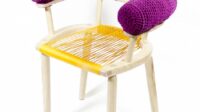
Cricut Cutting: Mastering the Basics
Introduction
Cricut cutting machines have revolutionized the world of crafting and DIY projects. With their precision and versatility, these machines enable you to transform everyday materials into stunning creations. This comprehensive guide will delve into the basics of Cricut cutting, empowering you to unleash your creativity and master this exciting technique.
Understanding Your Cricut Machine
Cricut offers a range of cutting machines, each designed for specific crafting needs. The most common types include:
- Cricut Explore: A versatile machine suitable for beginners and experienced crafters alike.
- Cricut Maker: A more advanced machine with the ability to cut thicker materials and perform intricate cuts.
- Cricut Joy: A compact and portable machine ideal for quick and easy projects.
Choosing the Right Materials
The type of material you choose will depend on the project you have in mind. Cricut machines can cut a wide range of materials, including:
- Paper: Cardstock, construction paper, vellum
- Vinyl: Adhesive vinyl, heat-transfer vinyl
- Fabric: Cotton, canvas, felt
- Leather and Faux Leather
- Wood (Cricut Maker only)
Preparing Your Design
Once you have selected your material, you will need to create or import a design into Cricut Design Space, the online software platform used to control the machine. Here are the steps involved:
- Open Design Space: Go to design.cricut.com and create an account if you don’t have one.
- Create a New Project: Click on "New Project" to start a new design.
- Import or Upload Design: You can import designs from external sources or upload your own using "Upload Image."
- Adjust Design Size and Placement: Use the resize and rotate tools to adjust the design to your desired size and position it on the virtual canvas.
Setting Up the Machine
Before you start cutting, you will need to set up your Cricut machine properly. Here’s how:
- Load the Material: Place the chosen material onto the cutting mat, ensuring it is securely attached.
- Insert the Mat: Insert the cutting mat into the machine, aligning it with the guides.
- Select the Material Type: On the machine’s control panel or through Design Space, select the type of material you are cutting.
Cutting Your Design
- Send the Design to the Machine: From Design Space, click on "Make It" and follow the prompts to send the design to the machine.
- Start Cutting: Press the "Start" button on the machine to begin cutting.
- Monitor the Cutting Process: The machine will automatically cut the design. You can monitor its progress on the display screen or through Design Space.
Removing the Cut Material
Once the cutting process is complete:
- Unload the Mat: Remove the cutting mat from the machine and lift away the excess material.
- Remove the Cut Design: Carefully remove the cut design from the material backing.
- Clean the Cutting Mat: Use a lint roller or adhesive remover to clean any leftover material from the cutting mat.
Advanced Techniques
As you become more comfortable with Cricut cutting, you can explore advanced techniques to enhance your projects. These include:
- Scoring: Embosses a design onto the material, creating a realistic texture.
- Perforating: Punches small holes into the material, allowing it to be torn easily.
- Foiling: Adds a metallic sheen to your designs using foil transfer sheets.
- Layering: Combines multiple colors and materials to create intricate and dimensional designs.
Troubleshooting Common Issues
If you encounter any issues while Cricut cutting, here are some common solutions:
- Material not cutting through: Ensure the blade is sharp, the material is properly secured, and the correct material setting is selected.
- Material tearing or shifting: Use a stronger material or adjust the cutting pressure settings.
- Design not aligning correctly: Double-check the design placement in Design Space and make sure the material is aligned with the guides on the machine.
- Machine not responding: Ensure the machine is properly connected to the computer or Wi-Fi, and restart the software if necessary.
Tips for Success
- Practice with different materials to find what works best for your projects.
- Keep your blades sharp to ensure clean cuts.
- Experiment with different design settings to achieve the desired results.
- Join online Cricut communities or forums for support and inspiration.
- Be patient and don’t give up if you encounter any obstacles.
Conclusion
Mastering Cricut cutting opens up a world of creative possibilities. By understanding the basics, choosing the right materials, and following the proper techniques, you can unlock the full potential of this versatile tool. With practice and experimentation, you will be able to transform your imagination into stunning handmade creations. So embrace the possibilities and let your creativity soar with Cricut cutting!






